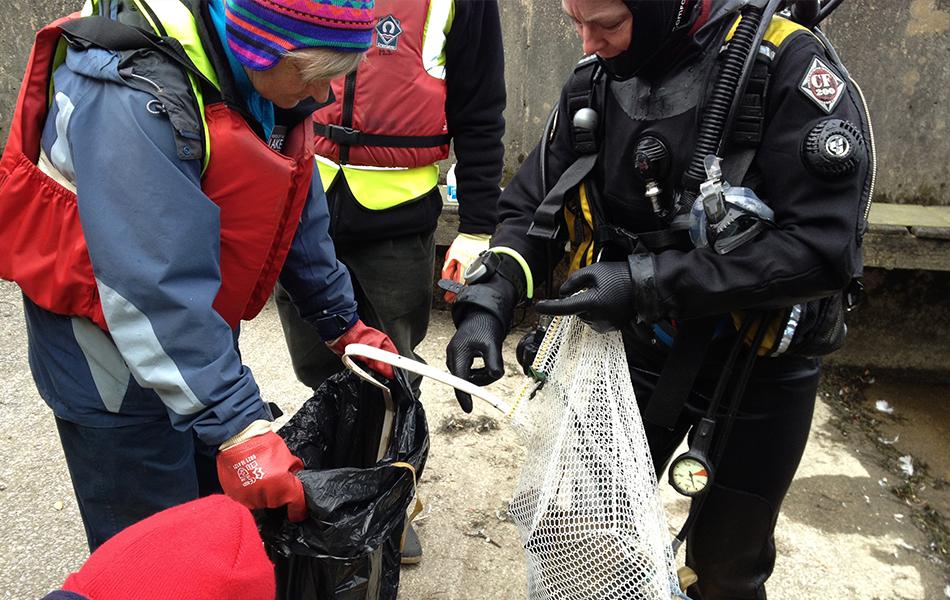
After witnessing the impact of plastic pollution on a beautiful Jamaican beach, Becky Hitchin considers if the problem is too big to resolve…
Yesterday, I was lucky enough to go swimming in Jamaica. The sea water was gorgeously warm, the waves big enough to jump over and swim under and enjoy. What was not so good was the amount of plastic debris in the water, becoming part of the sandy seafloor and washed up on the beach. That’s not a new story for many people, but it was a new story for some of the people I was swimming with, and it made me think a bit more about plastic pollution in our shallow waters and on the beaches.
80% of floating plastic waste drifts no more than 10km from the coast
While most models have suggested that the majority of plastics end up in mid-ocean gyres (such as the Great Pacific Garbage Patch), a new study from Germany suggests that actually most of the plastic does not end up in these far offshore places, and that about 80% of floating plastic waste drifts no more than 10km from the coast. They also suggest that between one third and virtually all the plastic washed into the sea will become stranded on our beaches and shores.
This can be seen by divers in so many places around the world. One study by the University of Tasmania showed that beaches in the Cocos (Keeling) Islands contain an estimated 414 million pieces of plastic debris. This equates to 238 tons of plastic, which included 373,000 toothbrushes and 977,000 shoes. In the Caribbean, clean-ups over 2006-2012 removed 3,990,120 pieces of plastic debris from coastal and underwater sites.
In the Galapagos, at San Cristobal, more than 400 plastic particles were found per square metre of beach, including within marine invertebrates such as barnacles and sea urchins. On the south-west coast of Ascension Island, 7,000 pieces of plastic were removed during a recent expedition, with origins as far afield as China, Japan and South Africa.
The worst, however, is the small and remote Henderson Island (part of the Pitcairn Islands group) in the Pacific Ocean, where researchers have discovered 37.7 million pieces of plastic waste on the beaches. That is about 671 pieces of litter per square metre. Henderson Island is more than 5,000km (3,106 miles) from any major centre of population. The researchers undertaking the survey sadly noted that their figures were probably even an underestimate, as they did not collect any plastics smaller than 2mm and only collected from beaches, not the whole coastline.
So... there’s no shortage of doom and gloom. But there is some hope. In 2022, the United Nations Environment Assembly adopted a new resolution to end plastic pollution through the development of an international legally binding instrument. The treaty is aiming to address several issues: limiting or eliminating the production of new plastic; developing a recycling industry to address the seven billion tonnes of waste plastic already in circulation, and creating a sustainable circular economy for plastic.
These are weighty tasks for the committee established to deal with such issues. There will be many challenges balancing the interests of all countries involved – from those for whom plastic production is a major economic source, to those who want strong obligations against dumping of plastic waste.
Solving the plastic issue is going to be a worldwide problem, and divers will have a voice. They can choose resorts that are engaged in the process, that understand the issues and promote the importance of sustainability to their customers. Divers can bring trash out of the water, as so many do who will be reading this, to make sure that is it disposed of correctly. And equally importantly, divers can simply act sustainably themselves, choosing not to use single use plastics and showing leadership to the marine communities about their choices.
Article ‘Trash, trash and more trash?’ by Becky Hitchin first published in SCUBA magazine, Issue 138 September 2023.

 Author: Becky Hitchin | Posted 13 Oct 2023
Author: Becky Hitchin | Posted 13 Oct 2023



